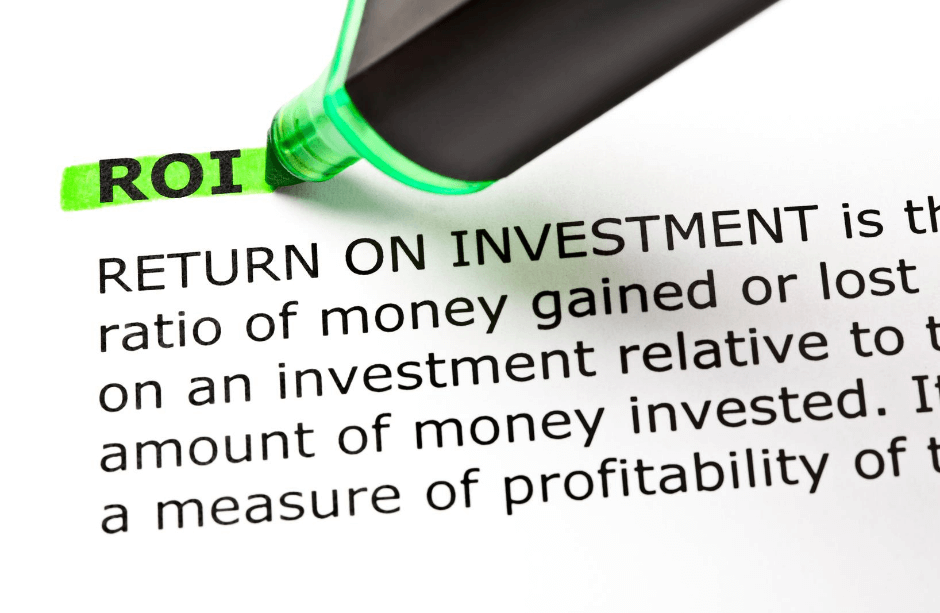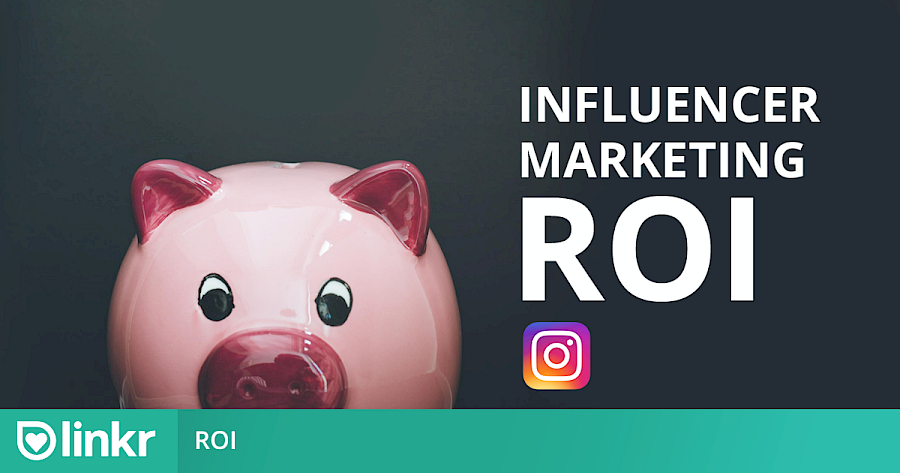Instagram is the hottest influencer marketing channel right now, and that’s why brands are aligning themselves with top influencers on it. But one of the most challenging aspects of enlisting Instagram influencers is ensuring the return on investment (ROI). Although insightful marketers have a fair grasp of what ROI is, many of them don’t understand what it is.
We’ve heard stories of companies dropping their influencers altogether because their analytics showed just improvement in engagement with little translation to sales. Indeed, from anyone’s perspective, that could mean influencer marketing ROI is lackluster. In fact, many companies are hesitant to outsource content creation to influencers because of the fear of questionable ROI.
At closer inspection, however, such pessimism is based on a sad misunderstanding of the ROI of influencers.
ROI depends on the goals
If your goal in farming out content marketing to influencers is to make more people know about your brand, then you should measure the success of your campaign using brand awareness and audience growth as the main metrics. Marketers sometimes think a brand awareness campaign necessarily creates fantastic conversions, but these are two different metrics. In addition, campaigns for brand awareness are inherently different from campaigns for sales. And if you’re saying that the strategy failed because it didn’t bring people to your stores, your expectations are misplaced. That’s why you need to understand why your campaign goals matter.
But what is ROI anyway?

Return on investment is simply the ratio of profit to investment. This is expressed in percent. If you invested $1,500 on influencers and you get $3,000 worth of profit, that means you gained twice your investment or 200% ROI. But this is rather a simplistic and quite frankly a traditional way of viewing ROI, which has taken on different flavors since the advent of digital marketing.
You might have heard of social media statistics ROI, wherein engagement is calculated against a unit of social media marketing strategy. This type of metric is useful in measuring influencer ROI, which isn’t just about sales.
In other words, ROI for influencer marketing tells us how effective the campaign is in achieving its goal. That’s why part of making your campaign brief is detailing your goal and enumerating key performance indicators.
Calculating Instagram influencer marketing ROI
Contrary to what you might have been told, it’s fairly easy to calculate ROI for influencer marketing on Instagram as long as you know your goals and the key performance indicators to check out - and as long as you have the right influencer marketing tool.
Just as a reminder, before you can make most ROI calculations, you need to have an Instagram business account, without which you can’t access your Insights data. Also, you need to know your influencer marketing budget, which includes not only the influencer compensation but also other factors like the cost of product placement and overhead.
So let’s get down to the most important metrics to look at when calculating return on investment:

→ Profile Visits
One of the ways we can tell that an influencer campaign is working is by checking the number of profile visits. However, since we’re talking about ROI, it’s right to look into profile visits per dollar, a metric that basically tells us how much an audience trusts the influencer. A well trusted influencer will be able to seduce his audience to visit your Instagram account by mentioning your brand on his post.
Precision is hard to come by, though, because Instagram only provides weekly data on profile visits. Still, you can make an approximation by getting the number of profile visits in the past seven days and dividing that number by the amount of money spent on the campaign for that particular week.
→ New Followers
Profile visits aren’t everything. Just because an influencer’s post drove people to check out your page, that doesn’t mean they will follow you right away. If substantial-profile visits don’t shift your follower count, there’s a problem with your Instagram content or your influencer campaign.
Although you naturally gain new followers, the number of new followers should grow once you work with influencers. Ideally. But that’s not always the case. Hence, it’s important to determine whether your influencer campaigns are raising your follower count.
To calculate the new followers gained per dollar, you first need to know the average number of new followers per day. Just go to the Audience tab in your Instagram Insights and look at the number of followers you gained in the past week. Then divide this number by 7 to know the average number of new followers you have per day for that week.
You can also use third-party tools that allow you to track the daily growth of your follower count. You can then compare the number of new followers before and after the influencer campaign. You can also compute the number of new followers generated by the campaign against the cost of the campaign.
→ Web Traffic
Another way of measuring influencer ROI is by assessing the increase in web traffic since the influencer campaign began. The mistake is to just check Instagram stats without any idea whether these figures have any meaningful implications on your website traffic, which largely determines monetary returns. Although we’ve yet to see all Instagram profile visits translating to inbound web traffic, seeing an increase in web traffic is an indication that your strategy is effective.
Please note that the only feasible way to drive traffic to your website is via Swipe-up links on Instagram stories, as they are the only native way Instagram provides for leaving their ecosystem.
Measuring website traffic per dollar spent includes, again, checking weekly website sessions, which can easily be done with tools like Google Analytics. You will have to compare web sessions before and after the influencer campaign was made. More importantly, divide the total website visits during the course of the campaign by the total cost of the campaign during that period. You want a big number that indicates your influencer campaigns on Instagram are working.
→ Sales
While it seems trivial at first, sales definitely is the most challenging metric to track - at least if you want to track it the right way.
But why is that? Contrasting how much I‘ve sold vs how much I‘ve spent sounds easy enough, doesn‘t it? Well, there are several influencing factors that most marketers repeatedly tend to forget or ignore when building their sales tracking setup for influencer marketing campaigns - or any other form of marketing effort for that matter. Let‘s have a brief look at them:
Conversion: You‘ve spent a significant amount of money on influencers but are not seeing any sales? Check the amount of website or webshop visits that you did get through influencers first. If you‘re getting a lot of traffic but still, no one is buying, there could be several issues in your conversion funnel. The price point you‘ve chosen could be above what people are willing to pay. Your shop doesn‘t look trustworthy and people shy away from purchasing. Your checkout might not be mobile-friendly. You might not support a certain payment option that people would have used and therefore can‘t complete the checkout. The list goes on almost infinitely and none of the items on there are things the influencer is responsible for.
Traffic quality: If your conversion figures are wrong for visitors sent to your website by influencers while traffic coming from other sources (e.g. Google Ads) converts just fine, then the influencers you are working with are sending you the wrong kind of traffic. That doesn‘t mean that traffic is low quality, it just means that it is almost certainly not ligning up with your target audience. In this case, you need to check the audience (followers) of influencers you‘re working with. Tools like linkr allow you to check things such as audience age group, gender, country, reachability, etc.
Retargeting: When was the first time you saw something on an ad and immediately bought it? Right, that hardly ever happens. As for any other marketing channel, retargeting is crucial for your conversion funnel. Over 90% of consumers are saying that they need to see something at least 2-3 times before making a purchase decision. Still, most marketers are going for 1-off cooperations, waiving around coupon codes at first contact. Decide for yourself how much sense that makes…
Attribution: But how do you track if someone saw your product on a post from an influencer, then saw it again 2 weeks later on another post from that influencer and finally bought it another 3 weeks in with a coupon code from a different influencer? The technique applied by most marketers, not only for influencer marketing but for any online marketing channel, is attribution. For influencer marketing, it essentially boils down to not only tracking how many people have purchased with a 7-day valid discount code but looking at your overall spend vs. revenue in a (rolling!!) time-window -> your conversion window. How big that window should be is subject to a lot of factors (your product and things related to it such as seasonality, pricepoint, etc.; the maturity level of your business; the trust you‘ve already earned among consumers;...) but it‘s a value between 30-90 days for most businesses.
All right, now, there are a few caveats!
First, there are different ways to track these metrics depending on your available analytics software and the nature of your cooperations - i.e. the nature of your cooperations determines how you will measure the ROI of influencers. Since we recommend building relationships with influencers, then tracking your ROI continuously is the logical approach.
Second, as mentioned earlier, only measure ROI based on your goals. If the goal was to raise brand awareness, don’t move the goalpost by assessing sales and judging the health of your collaborations using sales data.
Third, measuring the metrics mentioned above is easy if you’re working with one or two influencers. But we’re past the era of single-influencer collaborations. We’ve established how important it is to partner with multiple micro-influencers. These multiple partnerships make tracking the ROI of each partnership and each campaign more challenging, due to the increased overhead involved. That’s where influencer marketing automation comes in.
Calculating the ROI allows you to check the effectiveness of cooperations with influencers promoting your brand.



